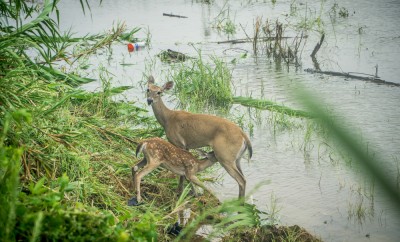Cultures
The zoo horrors you’ll never see

Image: Shutterstock/Volodymyr Goinyk
Going to the zoo normally ranks on the list of childhood’s fun memories up there with beach days and the first day of summer break. It’s normally a place of wonder where you get face-to-face with creatures of the wild, and can even be a fun place as an adult. But sometimes there’s a dark side to keeping animals in captivity.
Welcome to Indonesia’s Surabaya Zoo, which has been labeled the “death zoo.” The zoo has a death rate that would make even a soulless person feel sad. In under twelve months, nearly one hundred animals died at the zoo. One of the latest deaths includes Rama, a Sumatran tiger on the critically endangered list. The tiger died of heart failure. Before that, the tiger showed lethargy, had a bad cough and had teeth problems.
It’s hardly a new problem. Back in 2010 the zoo was seeing up to 25 animals die each month. The truly odd aspect of these tragedies is the sheer randomness of some of the incidents. In 2012 a giraffe was found dead with a 40-pound ball of plastic in its stomach. A white tiger sustained a tongue injury that prevented it from eating. A lion tangled its neck in a cable and strangled itself to death.
All of this can be traced back to issues with neglect. Critics say the zoo is overpopulated, cramped and the cages are full of trash. So the problem isn’t exactly kept hidden. PETA has called for the zoo to be shut down.
Is keeping animals in captivity even a good thing?
Surabaya Zoo is far from the only case of animal neglect and death while in captivity. This news comes hot off the tail end of the deaths at Sea World. In 2015 the San Antonio park saw three whale deaths. Bad press and issues with whale heath in the parks caused Sea World to famously announce the shutdown of the whale show at the San Diego park in 2017.
Concerns abound about the feasibility of keeping orca whales in captivity, seeing as they can live 30-50 years in the wild, but are dying of illnesses like odd infections at age eighteen in the parks. Such was the case with an orca named Unna. On average orca whales survive less than ten years in captivity.
Keeping animals in captivity has long been a favorite protest point of activists around the world, and one stereotypically seen as a concern of the most die-hard PETA members.
PETA itself states on their website,
“Even under the best of circumstances at the best of zoos, captivity cannot begin to replicate wild animals’ habitats. Animals are often prevented from doing most of the things that are natural and important to them, like running, roaming, flying, climbing, foraging, choosing a partner and being with others of their own kind. Zoos teach people that it is acceptable to interfere with animals and keep them locked up in captivity, where they are bored, cramped, lonely, deprived of all control over their lives and far from their natural homes.”
And with news of all these animal deaths, it may be a more mainstream issue than we think. Clearly, in many cases, humans don’t know best for these animals.
Should we boycott all zoos?
Not necessarily. Captivity has its place when it comes to rehabilitating animals and keeping them safe from poachers. The problems arise when we treat animals like our own personal form of entertainment. Traditionally zoos and wildlife parks have treated their wards like circus animals for human amusement, keeping animals in cramped conditions and highly controlled environments, as seen in Sea World and Surabaya Zoo. Clearly, that has devastating consequences for animals.
But many zoos out there, especially ones accredited by organizations like the Association of Zoos and Aquariums, focus on conservation. These are zoos that are devoted to research, public education and conservation by breeding and releasing animals into the wild. A good zoo will also keep plenty of clean room for the animals and have animals regularly checked by veterinarians. It’s time we think of zoos as a service to the animals, instead of merely a cool thing to look at for ourselves.





0 comments